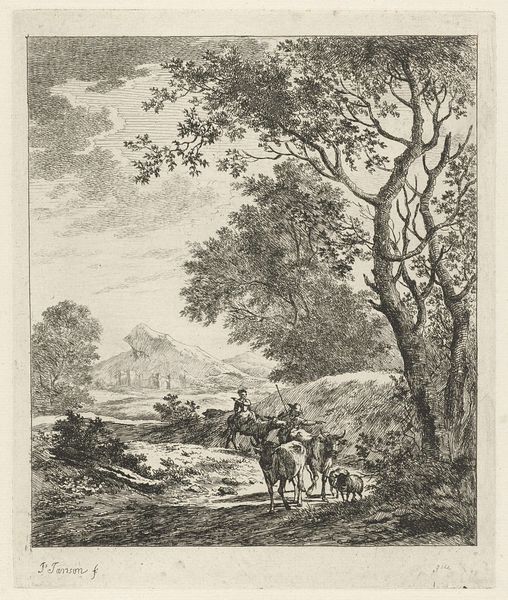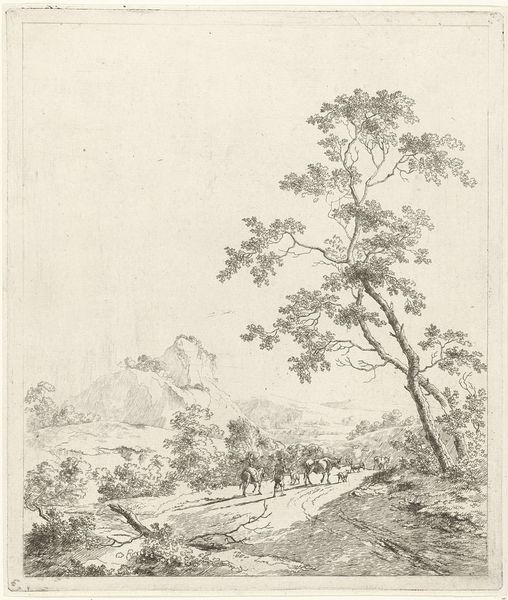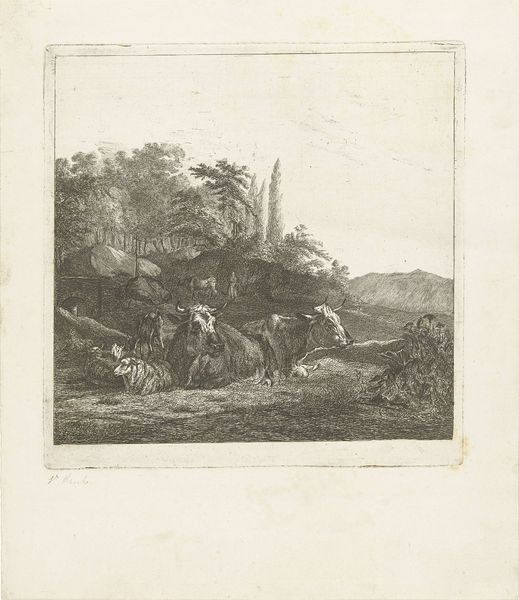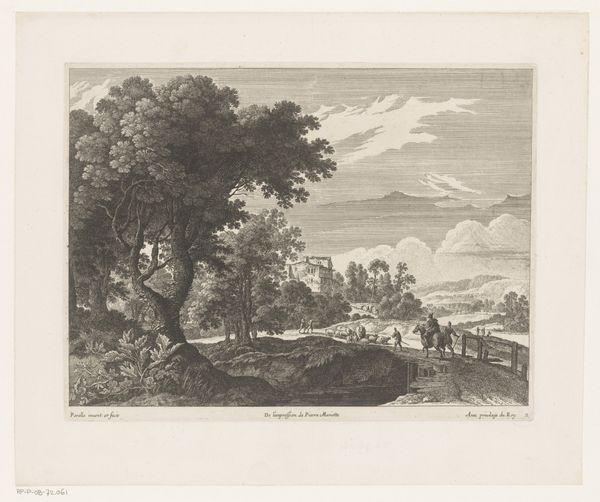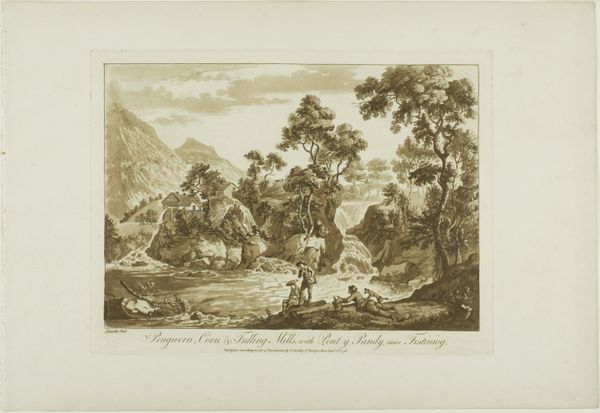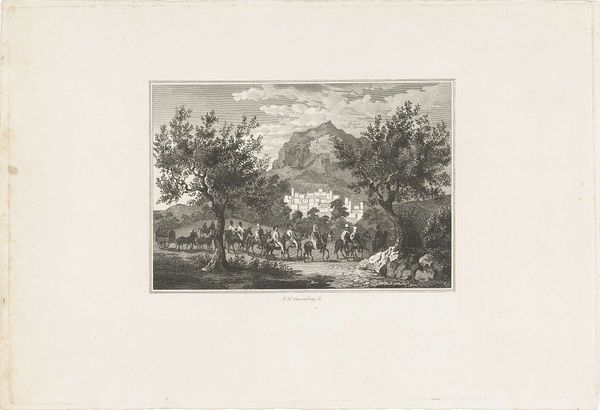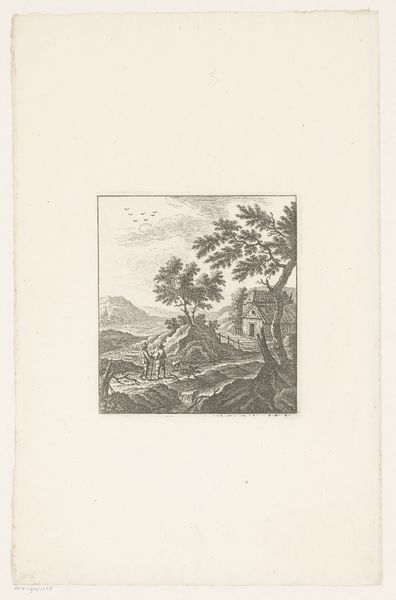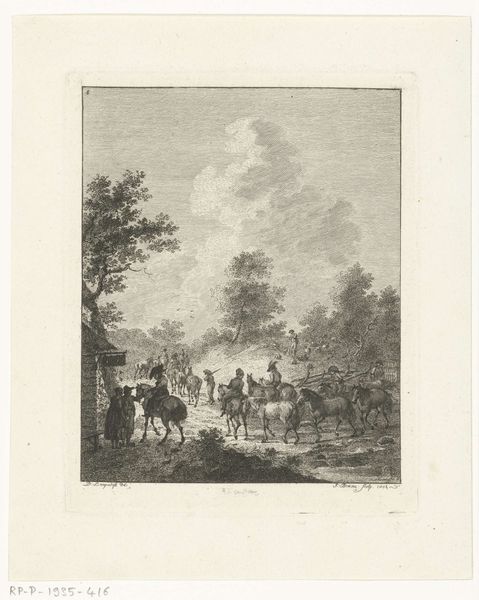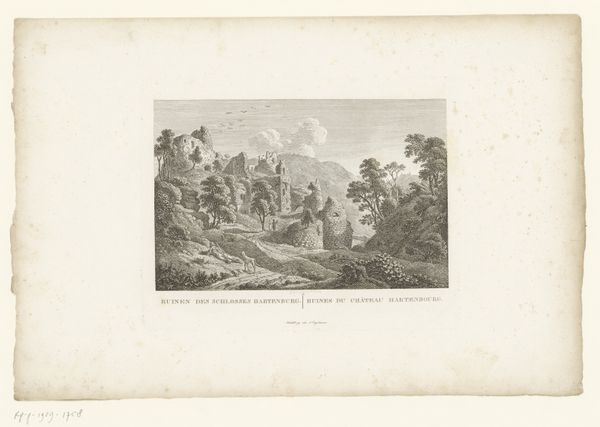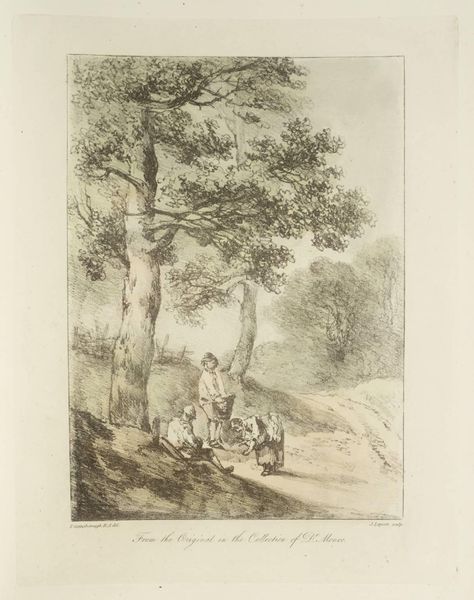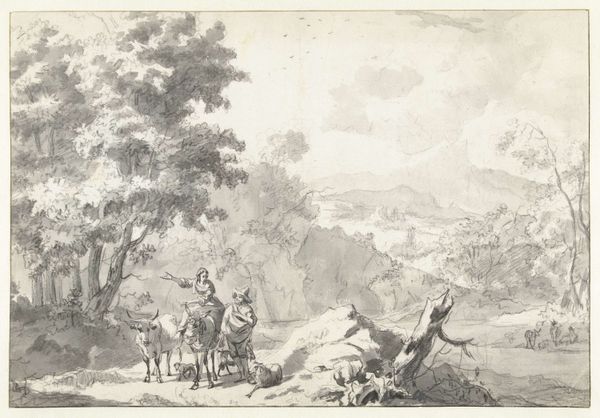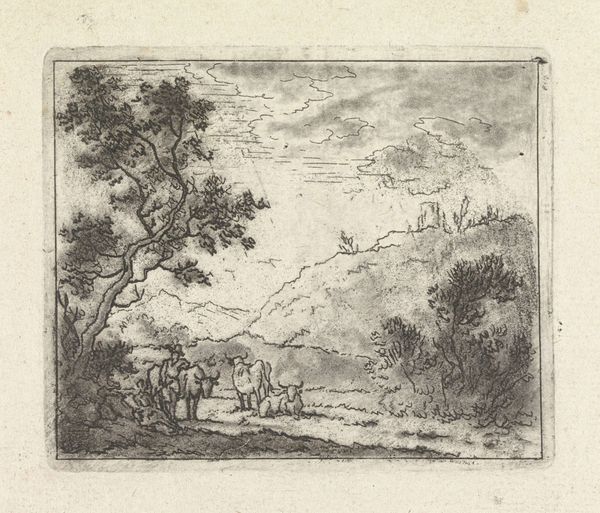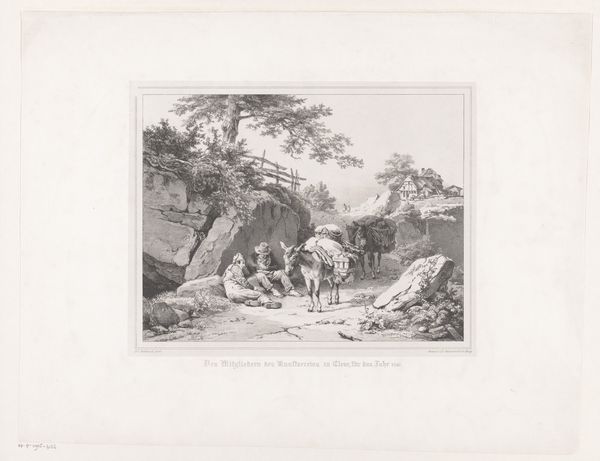
etching
#
etching
#
landscape
#
etching
#
romanticism
#
genre-painting
Dimensions: height 135 mm, width 107 mm
Copyright: Rijks Museum: Open Domain
Curator: This etching by Joannes Bemme, titled "Soldiers Driving a Herd of Cows Across a Bridge," was created in 1803. It's currently housed in the Rijksmuseum. The technique allows for some intricate detailing, wouldn't you say? Editor: Immediately, I’m struck by the sort of melancholy mood it evokes. The soft grays, the almost hazy quality…there’s a dreamlike feel to the scene. Curator: It’s fascinating how an artist renders such a complex scene using just line work. Looking at the human figures – the soldiers and herders, for instance – you start to consider the role of labour in agrarian society during that period. The level of work just to maintain livestock. Editor: The bridge itself feels less like an architectural marvel and more like a portal, a transitional space between one state and another, emphasized by the mountain's strong presence. Are they traveling to war, maybe bringing needed materials to fellow soldiers? This bridge suggests some psychological journey as much as a physical one, it invites narrative speculation. Curator: Well, this etching participates in Romanticism conventions by idealizing rustic labor, however the realities would likely have been drastically more arduous. What were the working conditions of printmakers like Bemme himself during this time? How did they source materials, organize workshops, distribute their prints? It's important to think about the relationship between artistic output and broader systems of production. Editor: Beyond that, notice how the animals—the cows specifically—are almost hieroglyphic. Their repetitive presence could signal ideas about the rural idyll, but maybe more realistically, a constant state of toiling and living from what these herds create, a return to basic ways of life. Curator: Seeing the materials involved is powerful as a way of grasping those lived experiences. It provides an invitation to explore what production tells us about the artwork's value within that time and today. Editor: Indeed. And, through symbols, images preserve an unbroken line to our past experiences. The artist allows us access to both. Curator: Well, considering it that way allows us a richer, more dynamic vision for that period. Editor: Absolutely. Now I perceive all those images as memories, almost inherited from the past.
Comments
No comments
Be the first to comment and join the conversation on the ultimate creative platform.
